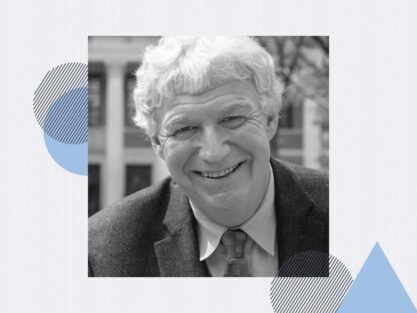September 3, 2021 – It’s too soon to know the full consequences of Hurricane Ida on the New Orleans region, but there are already lessons we can draw from its impact and our response, says Richard Serino, former deputy administrator of the Federal Emergency Management Agency and a distinguished senior fellow at the National Preparedness Leadership Initiative.
Q: So far, Hurricane Ida doesn’t seem as catastrophic as Hurricane Katrina, which hit the same region 16 years ago. Is that your assessment?
A: The good news is a lot of the mitigation that has been done for the past 16 years has helped. But there’s still a lot of devastation that we haven’t seen.
There’s a million customers without power. Think of each customer as a household. Even if you say two people per household, well, you’re already at two million people without power. New Orleans is without power. And yes, they have generators. But how long have those generators got before they stop working? We don’t know the answers to all these things yet because it’s still an ongoing crisis.
It really should serve as a wake-up call, not just in Louisiana, but to all of us about the health effects of climate change in vulnerable populations. Don’t forget that this hurricane came up from a tropical storm to a Category 4 hurricane in three days. That doesn’t give people as much time to prepare. If you don’t have as much time to prepare, you’re going to have a lot more problems.
Q: What can FEMA and the state and local agencies really do to prepare for something like Hurricane Ida?
A: After Katrina, the federal government didn’t go in until at least until three days later. The post-Katrina Emergency Management Reform Act gave FEMA the authority to go in and get prepared ahead of time.
That changed everything, from developing the relationships ahead of time to developing the whole community response, bringing together the federal, state, local, tribal, territorial governments, the nonprofit agencies, the faith-based community. I was shocked that we didn’t have that in 2009 [when he joined FEMA]. We didn’t have a written agreement with the American Red Cross, even though they do the shelters. We didn’t have agreements with the faith-based communities that feed people.
We have to get aggressive on climate resiliency. We have to get aggressive on how we decrease the complexity of dealing with FEMA. We have to look at the equity issues because the equity issues are real. We have to really start to plan and change our policies quicker because the face of disasters are changing quicker.
Q: What kind of lessons could you foresee us taking from what we know about the impact of Hurricane Ida so far?
A: The good news is that FEMA used to spend an average of $50 million on mitigation annually. Now it’s almost $5 billion dollars. FEMA’s staff has been increased a bit, but not to administer $5 billion. FEMA spends so much money on what it calls public assistance, [money distributed to state and local governments and certain non-profits] which is the vast majority of money that goes out after disaster recovery, versus individual assistance, which goes to individuals. It needs to simplify the process for access to funding for BRIC (Building Resilient Infrastructure and Communities) funding, and also for individuals. You shouldn’t have to hire a contractor to get funds. Individuals don’t even have a caseworker to help them go through the process. [FEMA announced on September 1 that it would change the way it works with individuals.]
We all forget a lot of time that it’s about the people. It’s about the survivors. Think about the survivors first. Because it’s key to how we provide service—FEMA, state and local officials, aid organizations, first responders—and it’s real easy to forget. Especially if you’re working in a cubby or you’re working remotely. It’s really important to continually focus people who are doing the work supporting relief and recovery efforts that it’s about survivors. Because very few people are actually dealing with survivors face to face.
